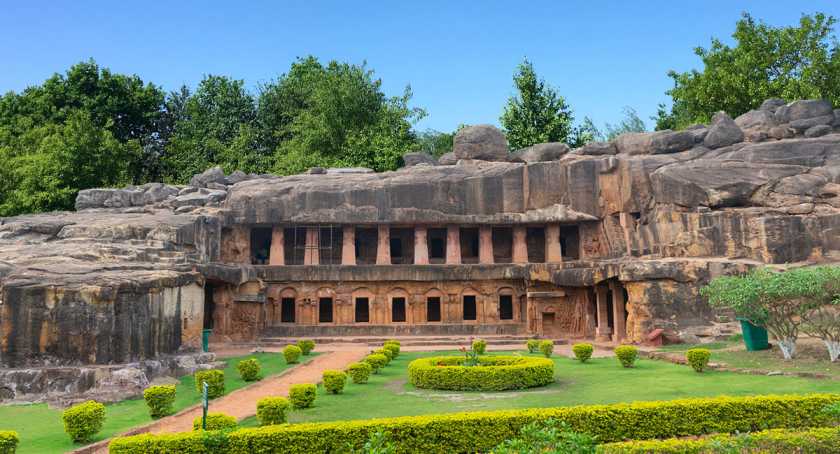Popular Secret Caves of Odisha
Odisha, the land of ancient temples and pristine beaches, harbors a treasure trove of secrets beneath its rugged terrain. Beyond the well-trodden tourist paths lie the enigmatic secret caves of Odisha, shrouded in myths, spirituality, and historical intrigue. These subterranean marvels, some natural and others chiseled by human hands, offer a look into a past where sages meditated, kings took refuge, and legends were born.
Join us as we journey through these mystical caves, uncovering the tales hidden within their stone walls.
Udayagiri and Khandagiri Caves: Echoes of Jain Monasticism
Among the most famous caves in Odisha are the twin hills of Udayagiri and Khandagiri in Bhubaneswar. These rock-cut caverns, dating to the second century BCE, were built by King Kharavela of the Mahameghavahana dynasty. The caves once belonged to Jain monks, and the complex carvings and inscriptions tell stories of conquest, devotion, and renunciation.
One of the most intriguing caves here is the Rani Gumpha (Queen’s Cave), adorned with beautiful relief sculptures depicting scenes of royal processions and celestial beings. The Hathi Gumpha (Elephant Cave) features an inscription detailing Kharavela’s exploits, shedding light on Odisha’s glorious past. Legends whisper that hidden treasures and ancient manuscripts lie buried within these caves, awaiting discovery.
Pandava Caves: The Exile of the Pandavas
The rich Mahabharata heritage is in the Pandava Caves, close to the well-known Sun Temple of Konark. According to local belief, the Pandava brothers took refuge here during their exile. Though primarily natural formations, these caves have been modified over centuries to serve as meditation chambers and shelters for hermits.
Mystics claim that the caves possess an ethereal energy conducive to deep meditation. The surrounding forests add to the mystique, making it an ideal retreat for those seeking solitude and spiritual awakening.
Gupteswar Cave: The Hidden Shiva Shrine
Deep within the dense forests of Koraput lies the Gupteswar Cave, home to a naturally formed Shiva Lingam. The name “Gupteswar” translates to “hidden god,” signifying the shrine’s secretive nature. Pilgrims traverse winding forest paths and seek blessings at this sacred site, which devotees particularly revere during the festival of Shravan Maas.
Devotees’ chants and the rhythmic dripping of water from stalactites occasionally break the cave’s eerie silence. People believe these stalactites are holy and possess curative properties. The Pandava Caves, located close to the well-known Sun Temple of Konark, showcase the rich heritage of the Mahabharata.
Patala Ganga Cave: The Underground River
Situated in the Kalahandi district, Patala Ganga Cave is an underground marvel where a mysterious stream flows. The origins of this subterranean river remain unknown, fueling local legends that it is a sacred water source gifted by the gods. Devotees believe that bathing in its waters absolves sins and grants divine blessings.
The entrance to the cave is narrow and treacherous, adding to its aura of secrecy. The cool, damp air and gurgling water create a surreal atmosphere, making this cave a must-visit for adventure seekers and spiritualists alike.
Ravan Chhaya Cave: The Shadow of a Demon King
Located in the Keonjhar district, the Ravan Chhaya Cave gets its name from Ravana’s shadowy figure, the Ramayana’s antagonist, which appears on its rock face at certain times of the day. People believe this natural rock formation is a remnant of an ancient rock shelter that prehistoric humans once used.
Local myths suggest that Ravana once meditated here to gain power from Lord Shiva. The peculiar play of light and shadow on the rock has puzzled scientists and devotees alike, further deepening this site’s mystery.
Sita Benj Cave: The Goddess’s Retreat
Sita Benj Cave, located in Balangir district, is another site steeped in the epic of the Ramayana. Folklore claims that Sita, the wife of Lord Rama, stayed here during her exile. The cave, set against a backdrop of lush greenery and waterfalls, is a serene spot for contemplation and pilgrimage.
Some villagers claim to hear whispers and hymns from the cave during the full moon, attributing it to divine presence. Archaeologists, however, speculate that the cave might have been an ancient shelter or a ritualistic site for indigenous tribes.
Badaghagara Cave: The Waterfall’s Secret Chamber
Badaghagara Waterfall in Keonjhar district hides a secret- a small cave behind its cascading waters. The cave is accessible only during the dry season when the water recedes, revealing an ancient rock chamber believed to have been a refuge for ascetics.
Strange symbols and faint carvings adorn the walls, hinting at an unknown civilization. Some believe the cave leads to an undiscovered underground tunnel system, possibly used for rituals or secret gatherings in ancient times.
Vikramkhol Cave: The Prehistoric Script Enigma
Hidden in the dense forests of Jharsuguda district, Vikramkhol Cave is an archaeological wonder featuring enigmatic pictographs and script-like carvings dating back to 3000 BCE. Scholars believe these markings are an early script predating modern writing, possibly used for communication or religious purposes.
Local folklore describes sages meditating in the cave, adding to its mystique. The cave’s secluded location, surrounded by rugged terrain and lush greenery, continues to attract historians, archaeologists, and explorers eager to unravel its secrets.
Final Thoughts
The secret caves of Odisha are more than just geological formations; they are time capsules preserving tales of gods, kings, monks, and warriors. Whether serving as places of worship, meditation, or refuge, these caves continue to captivate the imagination of historians, spiritual seekers, and adventurers. While some caves are well-documented, others remain shrouded in mystery, waiting to reveal their secrets to those daring to explore.


